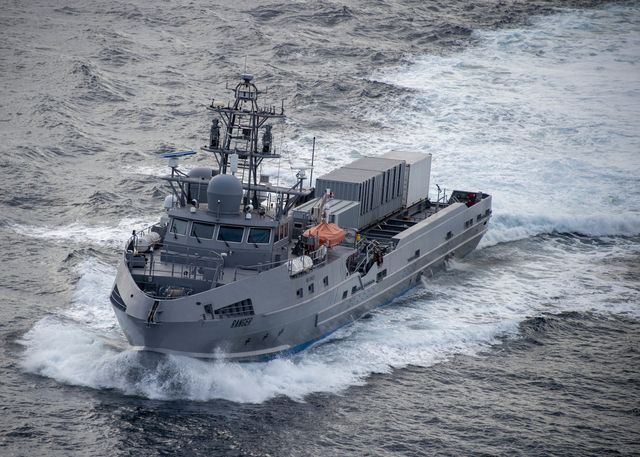Here Comes the Navy's Latest Robo-Ship, Testing Out a ‘Ghost Fleet’ Concept
Last week, the Navy christened a new“
Ghost Fleet” ship, an unmanned surface vessel called
Mariner. Designed to operate without a human crew, the ship will act as a test vehicle for the service’s manned/unmanned ship program, which envisions manned warships going into battle accompanied by one or more unmanned escorts. The program, known as Ghost Fleet Overlord, is probably the
Navy’s best chance at affordably growing the fleet and fleet capabilities.
The U.S. Navy is betting big on unmanned ships as a way to grow the fleet without busting its budget. The service, which currently has 300 warships,
wants to grow to 523 by the year 2045, with 150 of those ships as “ghost ships.” Ghost ships are cheaper to build and, lacking human crews, are cheaper to operate. They can be sent on duller—or more dangerous—missions that don’t require human crews, and can operate autonomously on their own or alongside manned ships.
The first mission for unmanned ships will be as part of a manned/unmanned team of ships, for example as a floating magazine for manned warships.
Ticonderoga-class guided missile cruisers are equipped with 122
MK 41 vertical launch missile silos, while
Arleigh Burke-class destroyers are equipped with 90 or 96 silos. These silos accommodate a mix of anti-air, anti-ship, anti-submarine, and land attack cruise missiles. In a sustained engagement, ships might run out of certain types of missiles, and the Navy has no way of reloading the silos at sea. A manned warship might be assigned one or more unmanned ships, each bristling with additional missiles, bolstering its firepower in both attack and defense.
In the event that enemy missiles get through the defensive screen, the unmanned ship could even take position and distract enemy missiles away from the manned ship, sacrificing itself and saving lives.
As artificial intelligence advances, a ghost ship could be outfitted with hardware mission payloads that allow it to conduct missions autonomously. A MUSV could be equipped with an anti-submarine warfare module, including
a towed sonar array, letting it patrol a patch of ocean for weeks on end. Once the sonar locates a possible enemy submarine, the ship would relay the sonar contact data to a human operator thousands of miles away. After determining there are no friendly submarines in the area, the human operator could then order the ghost ship to launch an
MK 54 anti-submarine torpedo at the mystery contact.
https://www.yahoo.com/entertainment...69-nhPglay7InFIofw0FgqCSxyGVNb-rELXX6myPdb3n6
maximus otter





